India, a land of diverse landscapes, offers a breathtaking array of natural wonders. From the snow-capped peaks of the Himalayas to the lush rainforests of the Western Ghats, the vast deserts of Rajasthan to the pristine beaches of the Andaman Islands, this country is a paradise for nature enthusiasts. Explore the vibrant Valley of Flowers, witness the majestic Bengal tigers in the Sundarbans, or experience the unique beauty of the Rann of Kutch. India’s natural wonders will leave you in awe and inspire a lifelong love for the outdoors.
- 1. The Majestic Himalayas
- 2. The Great Rann of Kutch, Gujarat
- 3. Sundarbans Mangrove Forest, West Bengal
- 4. Living Root Bridges, Meghalaya
- 5. Valley of Flowers, Uttarakhand
- 6. Loktak Lake, Manipur
- 7. Andaman and Nicobar Islands
- 8. Chilika Lake, Odisha
- 9. Western Ghats, Maharashtra and Kerala
- 10. Thar Desert, Rajasthan
- FAQs
1. The Majestic Himalayas
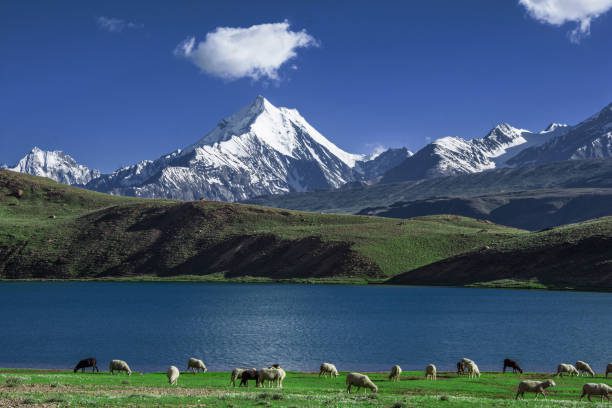
The Himalayas, India’s majestic mountain range, are a sight to behold. With their towering, snow-capped peaks and deep valleys, they are a symbol of natural beauty and spiritual significance. Stretching across northern India, the Himalayas are home to some of the world’s highest mountains, including Kanchenjunga, the third-tallest mountain on Earth.
Highlights:
- Trekking adventures in Himachal Pradesh and Uttarakhand
- Visits to hill stations like Manali, Shimla, and Leh
- Exploration of sacred sites such as Kedarnath and Badrinath
The Himalayas offer an ideal destination for those seeking adventure, spiritual retreats, and breathtaking scenic beauty.
2. The Great Rann of Kutch, Gujarat
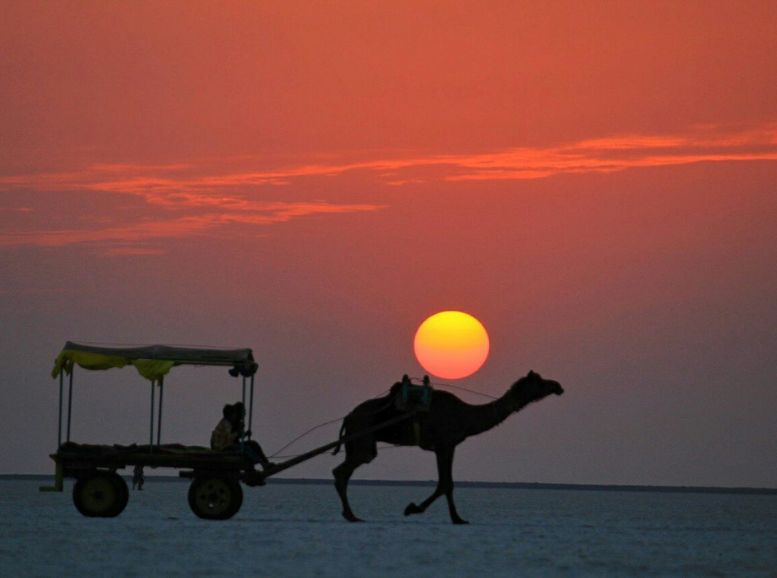
The Great Rann of Kutch, a vast salt marsh in Gujarat, transforms into a mesmerizing white desert during the dry season. Covering over 7,500 square kilometers, this unique landscape seems like something out of this world. The Rann Utsav, a vibrant cultural festival held in winter, adds to the otherworldly charm of this remarkable natural wonder.
Highlights:
- Witness the vast salt desert shimmering under the moonlight
- Experience the vibrant Rann Utsav with cultural performances and traditional crafts
- Visit the nearby Kalo Dungar (Black Hill) for panoramic views
The Great Rann of Kutch is an ideal destination for photographers and those seeking a unique desert experience.
3. Sundarbans Mangrove Forest, West Bengal
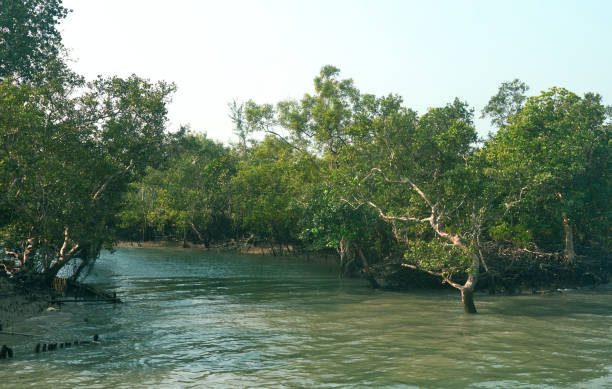
The Sundarbans, a UNESCO World Heritage Site, is the world’s largest mangrove forest and a vital part of India’s ecosystem. Found in the delta where the Ganges, Brahmaputra, and Meghna rivers meet, this dense forest is home to the renowned Royal Bengal Tiger, saltwater crocodiles, and many different kinds of birds.
Highlights:
- Boat safaris to spot the elusive Royal Bengal Tiger.
- Explore the winding waterways, mudflats, and islands.
- Birdwatching and discovering rare mangrove species.
This natural wonder is perfect for wildlife enthusiasts and those who want to experience the raw beauty of one of India’s most vital ecosystems.
4. Living Root Bridges, Meghalaya
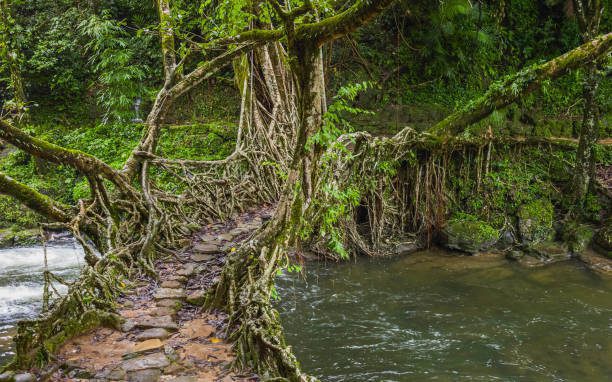
The Living Root Bridges, found in the northeastern state of Meghalaya, are a fascinating example of bioengineering. The roots of rubber fig trees are intertwined to create natural bridges that cross rivers and streams. Some of these bridges are over a century old and are still used by the local Khasi tribes to navigate the hilly landscape.
Highlights:
- Visit the double-decker root bridge in Nongriat.
- Trek through the lush greenery of Meghalaya’s rainforests.
- Experience the region’s unique culture and local villages.
The Living Root Bridges offer a magical experience for trekkers and nature lovers looking for an off-the-beaten-path destination.
5. Valley of Flowers, Uttarakhand
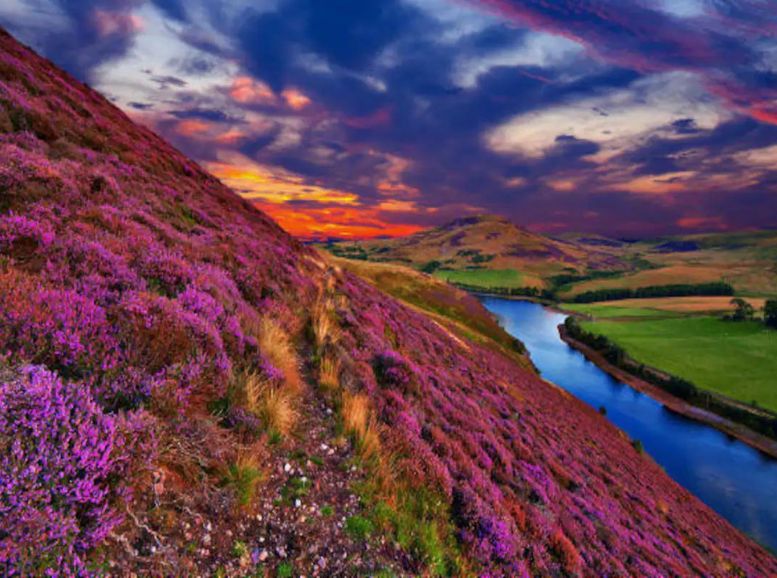
The Valley of Flowers, a UNESCO World Heritage Site in Uttarakhand, is a vibrant paradise for botanists, trekkers, and photographers. Located high in the Western Himalayas, this valley is blanketed with colorful wildflowers during the monsoon season, creating a breathtaking and picturesque landscape.
Highlights:
- Trek through the valley to witness an explosion of floral diversity.
- Spot rare and endangered species like the blue poppy and the Himalayan monal.
- Combine the trek with a visit to Hemkund Sahib, a revered Sikh pilgrimage site.
The Valley of Flowers is a must-visit for those who appreciate nature in its purest form.
6. Loktak Lake, Manipur
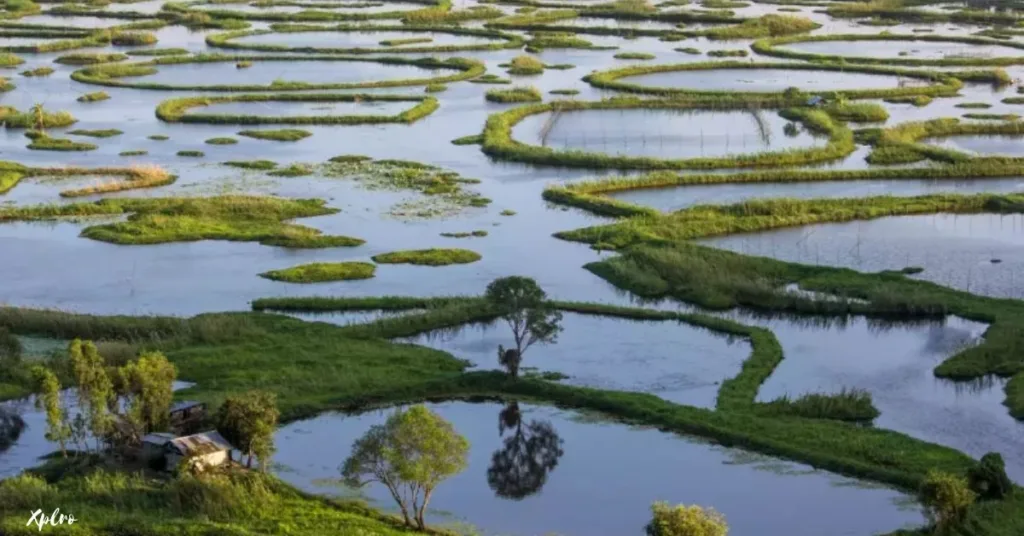
Loktak Lake, a stunning freshwater lake in the northeastern state of Manipur, is the largest of its kind in the region. It’s renowned for its unique phumdis, floating islands composed of decomposed vegetation. These floating islands create a captivating visual spectacle and play a vital role in the local ecosystem and economy.
Highlights:
- Explore the Keibul Lamjao National Park, the only floating national park in the world, which is home to the endangered sangai deer.
- Take a boat ride on the lake to experience the floating islands up close.
- Witness the rich biodiversity and migratory birds that flock to the lake.
Loktak Lake offers a serene and unique experience for nature lovers and eco-tourists.
7. Andaman and Nicobar Islands
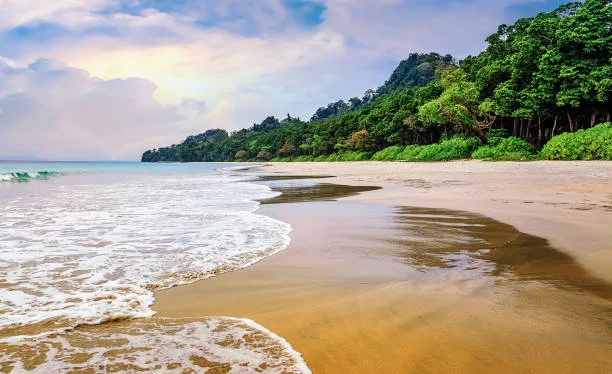
The Andaman and Nicobar Islands are a tropical paradise situated in the Bay of Bengal. Known for their crystal-clear waters, vibrant coral reefs, and rich marine life, these islands offer a perfect blend of adventure and relaxation. The pristine beaches and dense tropical forests make them an ideal getaway for travelers seeking a peaceful escape.
Highlights:
- Scuba diving and snorkeling at Havelock Island to explore coral reefs
- Visiting Radhanagar Beach, rated as one of Asia’s best beaches
- Discovering the colonial history of Port Blair and the Cellular Jail
The Andaman Islands are ideal for beach lovers, scuba divers, and history buffs seeking a remote, unspoiled destination.
8. Chilika Lake, Odisha
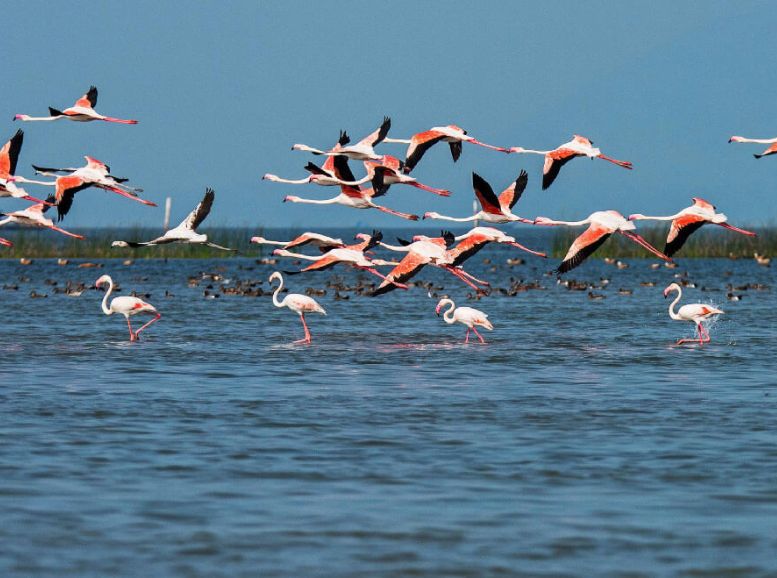
Chilika Lake, Asia’s largest brackish water lagoon and one of India’s most biodiverse wetlands, is a natural wonder located along the east coast. This vibrant lake is a haven for a diverse range of flora and fauna, including migratory birds that journey from as far as Siberia. Chilika Lake’s unique ecosystem makes it a paradise for birdwatchers and nature enthusiasts.
Highlights:
- Boat rides to spot the rare Irrawaddy dolphins.
- Birdwatching at Nalaban Island during the winter months.
- Visit the Kalijai Temple, located on an island in the lake.
Chilika Lake is a must-visit destination for eco-tourists and birding enthusiasts.
9. Western Ghats, Maharashtra and Kerala
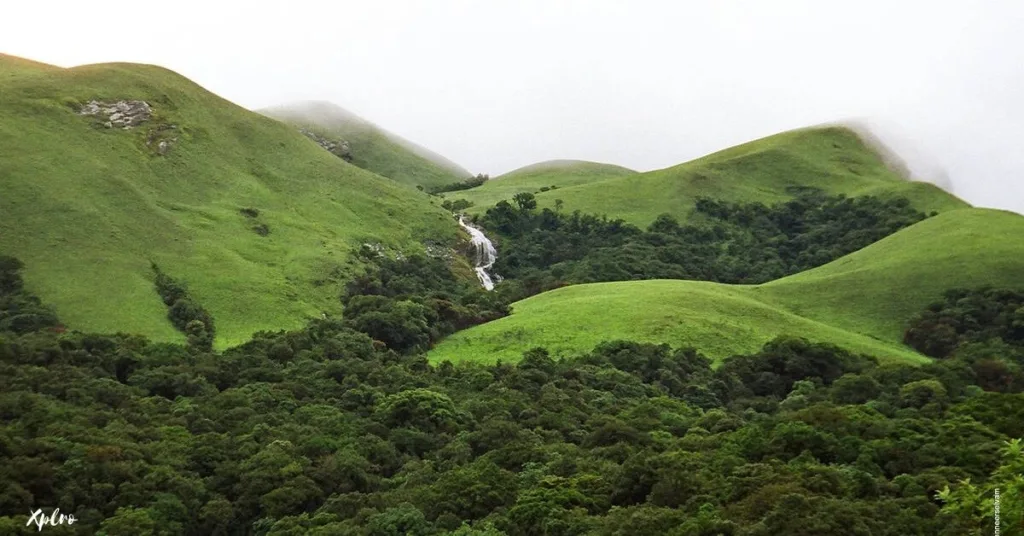
The Western Ghats, a UNESCO World Heritage Site, are a mountain range that runs parallel to India’s western coast. This biodiversity hotspot is home to a vast array of wildlife, dense forests, and numerous waterfalls. The Western Ghats are a treasure trove of natural beauty and offer ample opportunities for trekking, wildlife safaris, and birdwatching.
Highlights:
- Trekking to Dudhsagar Waterfalls in Goa or Athirappilly Waterfalls in Kerala.
- Exploring the evergreen rainforests of Wayanad and Munnar.
- Wildlife safaris in national parks like Periyar and Nagarhole.
The Western Ghats are an ideal destination for adventure seekers and wildlife enthusiasts.
10. Thar Desert, Rajasthan
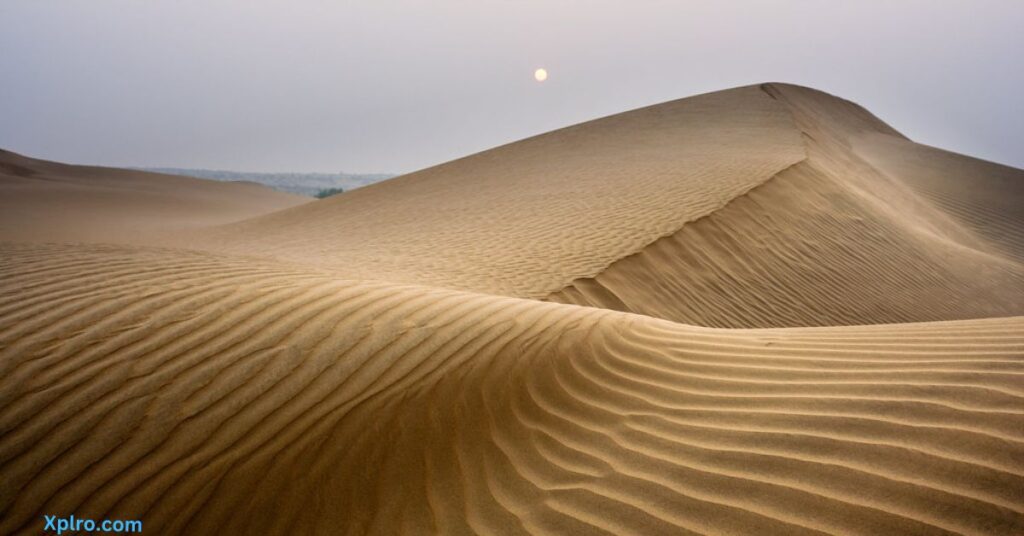
The Thar Desert, also known as the Great Indian Desert, offers a stark contrast to the lush greenery of other regions in India. Spanning across Rajasthan, the Thar Desert is a vast expanse of sand dunes, rocky terrain, and arid land, providing a unique desert experience.
Highlights:
- Camel safaris in Jaisalmer to explore the sand dunes
- Visiting ancient forts and havelis in Jodhpur and Bikaner
- Experiencing the vibrant Rajasthani culture through folk dances, music, and local cuisine
The Thar Desert is perfect for those seeking a unique cultural and natural adventure in India’s heartland.
Final Thoughts – India’ Natural Wonders
From the majestic Himalayas scraping the sky to the tranquil waters of Loktak Lake dotted with floating islands, India’s natural wonders are as diverse as its culture. Adventure seekers can scale the world’s highest peaks, wildlife enthusiasts can spot tigers in the Sundarbans, and nature lovers can find serenity amidst the vibrant blooms of the Valley of Flowers. Whether you crave the surreal white desert of the Rann of Kutch or the lush biodiversity of the Western Ghats, India’s natural landscapes offer endless opportunities for exploration and wonder. Discover these top 10 must-visit destinations and be awestruck by India’s incredible beauty. Plan your adventure today at Xplro.com, your one-stop shop for crafting the perfect Indian itinerary.
FAQs
1. What is the best time to visit India’s Natural Wonders?
- The best time to explore India’s Natural Wonders depends on the region you wish to visit. Generally, October to March is the most suitable time, as the weather is cooler and more comfortable. However, some places like the Valley of Flowers bloom in the monsoon, so it’s best to plan based on the specific natural wonder you’re visiting.
2. Can families and children visit India’s Natural Wonders?
- Yes, most of India’s Natural Wonders are accessible to families and children. Destinations like the Thar Desert, Sundarbans, and Andaman Islands offer family-friendly experiences. For more adventurous locations such as the Himalayas, guided tours can be customized to suit family needs.
3. Do I need permits to visit certain natural wonders in India?
- Yes, certain regions of India’s Natural Wonders require permits. For instance, the Andaman and Nicobar Islands require Protected Area Permits (PAP) for foreign travelers. Other regions, especially wildlife reserves, may also require entry permits. It’s best to check local regulations before planning your trip.
4. What should I pack for a trip to India’s Natural Wonders?
- Packing for India’s Natural Wonders depends on the location. For mountainous areas like the Himalayas, pack warm clothing, sturdy shoes, and trekking gear. In desert regions like the Thar Desert, light clothing, sunscreen, and hats are essential. For coastal and wetland areas such as the Andaman Islands or Chilika Lake, bring light clothing, swimwear, and insect repellent.
5. How can I travel responsibly to India’s Natural Wonders?
- To travel responsibly while visiting India’s Natural Wonders, be mindful of your environmental impact. Avoid littering, respect wildlife, and choose eco-friendly accommodations. Support local communities by engaging in sustainable tourism practices and use environmentally conscious tour operators.
6. Are there safety concerns when visiting India’s Natural Wonders?
- India’s Natural Wonders are generally safe for visitors, but it’s important to take precautions. In remote areas like the Himalayas or Sundarbans, always travel with a guide and adhere to local safety guidelines. Be aware of wildlife in regions like national parks, and always follow expert advice to ensure a safe experience.
7. Which of India’s Natural Wonders offer adventure sports?
- Many of India’s Natural Wonders are perfect for adventure sports. The Himalayas are famous for trekking, paragliding, and skiing. In the Andaman Islands, you can enjoy scuba diving, snorkeling, and kayaking. Trekking and wildlife safaris are popular in the Western Ghats and Sundarbans.
8. Can I find accommodation near India’s Natural Wonders?
- Yes, there are a variety of accommodation options near India’s Natural Wonders. From eco-lodges and homestays to luxury resorts, visitors have many choices. In areas like the Valley of Flowers, the Thar Desert, or the Andaman Islands, eco-friendly and local stays offer an immersive experience.
9. Can I visit India’s Natural Wonders during the monsoon?
- Some of India’s Natural Wonders, like the Valley of Flowers, are best visited during the monsoon (July to September) when the landscape comes to life. However, places like the Thar Desert and Rann of Kutch are better visited during the dry season. The monsoon may cause heavy rainfall in regions like the Western Ghats, making travel challenging.
10. How long should I stay to experience India’s Natural Wonders fully?
- The duration of your stay depends on the natural wonder you’re visiting. Trekking in the Himalayas or exploring the Andaman Islands may take 5–10 days. Shorter trips, like visiting the Great Rann of Kutch or Loktak Lake, can be experienced in 2–3 days. Plan according to the activities you wish to do.
11. What wildlife can I expect to see at India’s Natural Wonders?
- Each of India’s Natural Wonders boasts unique wildlife. The Sundarbans is home to the Royal Bengal Tiger, while Chilika Lake is famous for its migratory birds and dolphins. In the Himalayas, you might spot snow leopards and Himalayan monals. The Andaman Islands offer vibrant marine life, including coral reefs and sea turtles.
12. Are guided tours available for exploring India’s Natural Wonders?
- Yes, guided tours are widely available for most of India’s Natural Wonders. From trekking expeditions in the Himalayas to boat safaris in the Sundarbans, guided tours provide valuable insights and ensure a safer, more enjoyable experience. Opting for expert guides is particularly beneficial in wildlife areas and remote regions.





